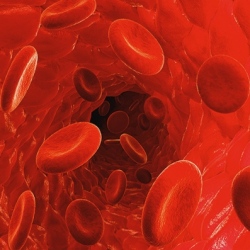
A research group that includes a University of Florida genetics expert has located and narrowed down the number of genes that play a role in the disease, according to a study published Monday in the journal Nature Genetics. Knowing the causative genes is a crucial development.
Researchers can use this information to better predict who might develop Type 1 diabetes and how to prevent it. “It’s a game-changer for Type 1 diabetes,” said Patrick Concannon, director of the University of Florida Genetics Institute.
Diabetes mellitus type 1 (also known as type 1 diabetes, or T1DM; formerly insulin-dependent diabetes or juvenile diabetes) is a form of diabetes mellitus that results from the autoimmune destruction of the insulin-producing beta cells in the pancreas.
The subsequent lack of insulin leads to increased blood and urine glucose. The classical symptoms are polyuria (frequent urination), polydipsia (increased thirst), polyphagia (increased hunger) and weight loss.
Diabetes mellitus type 1 accounts for between 5% and 10% of cases of diabetes. Globally, the number of people with DM type 1 is unknown, although it is estimated that about 80,000 children develop the disease each year. Within the United States the number of affected persons is estimated at one to three million.
The development of new cases vary by country and region; the lowest rates appears to be in Japan and China with approximately 1 person per 100,000 per year; the highest rates are found in Scandinavia where it is closer to 35 new cases per 100,000 per year. The United States and northern Europe fall somewhere in between with 8-17 new cases per 100,000 per year.
Type 1 diabetes is estimated to cause $10.5 billion in annual medical costs ($875 per month per diabetic) and an additional $4.4 billion in indirect costs ($366 per month per person with diabetes) in the U.S
Researchers gathered information about the genetic makeup of 27,000 people, including those who had Type 1 diabetes and others who did not. They then began looking for individual differences in DNA that raise the risk of Type 1 diabetes.
Starting with 200,000 possible locations in the genome, researchers used a technique known as fine mapping to pinpoint DNA sequence variations that can lead to diabetes. In some genomic regions, they narrowed the number of disease-causing DNA variations, known as single nucleotide polymorphisms or SNPs, from the thousands down to five or less.
That will make diabetes researchers’ work more effective and efficient by giving them the most detailed directions yet about where to look for the genetic variations that cause Type 1 diabetes and perhaps other autoimmune diseases such as arthritis, Concannon said. Now that the group of geneticists has identified the important genes and SNPs, diabetes researchers will reap the benefits, according to Concannon.
“We’ve taken this genetic data which was interesting but hard to work with, and we’ve condensed it down into something that people can actually use to begin to explore the mechanism of the disease. It moves it out of the realm of genetics to being broadly applicable to Type 1 diabetes research,” he said.
